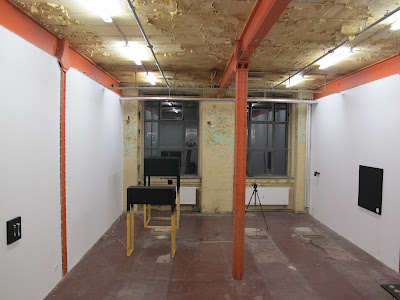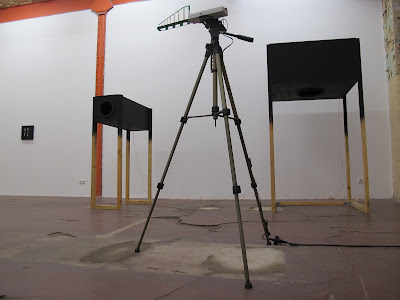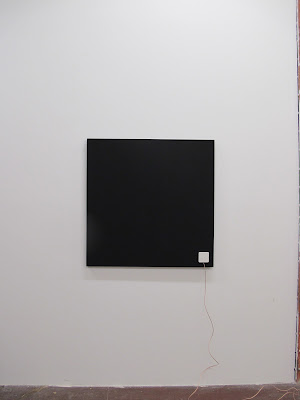EARTHQUAKE_4AM BRNO_VARP 2017
01.07.2017 - 30.09.2017_REZIDENCIA VARP / JÁN GAŠPAROVIČ: EARTHQUAKE
„Infrasound, sometimes
referred to as low-frequency sound, is sound that is lower in frequency than 20 Hz
or cycles per second, the "normal" limit of human hearing. Hearing
becomes gradually less sensitive as frequency decreases, so for humans to
perceive infrasound, the sound pressure must be sufficiently high. The ear is the primary
organ for sensing infrasound, but at higher intensities it is possible to feel
infrasound vibrations in various parts of the body.
The study of such sound waves
is sometimes referred to as infrasonics, covering sounds beneath 20 Hz down to 0.1 Hz and rarely to 0.001 Hz. People use this frequency range for monitoring
earthquakes, charting rock and petroleum formations below the earth, and also
in ballistocardiography and seismocardiography to study the mechanics of the
heart.“
Wave or different types of
oscillation is what these works have in common. During my residency I would like to examine
this topic and on the base of the research and experiments create a work which
could deal with the topic in a frame of my artistic practice.
At this
moment I have two points of interest:
First - is a sound which is generating vibration. I
would like to work with these vibrations.
Second -
study of site specific installation in the public space or gallery space, which would be based on surrounding
sounds and
environment. This work would be including researching/mapping of different
types of sounds, then generating these sounds around 20 Hz, and
using them for
creating the installation. This research should
result into an
exhibition installation, which would transform the existing
gallery space into a place with very specific sound and vibration
characteristics.




















































